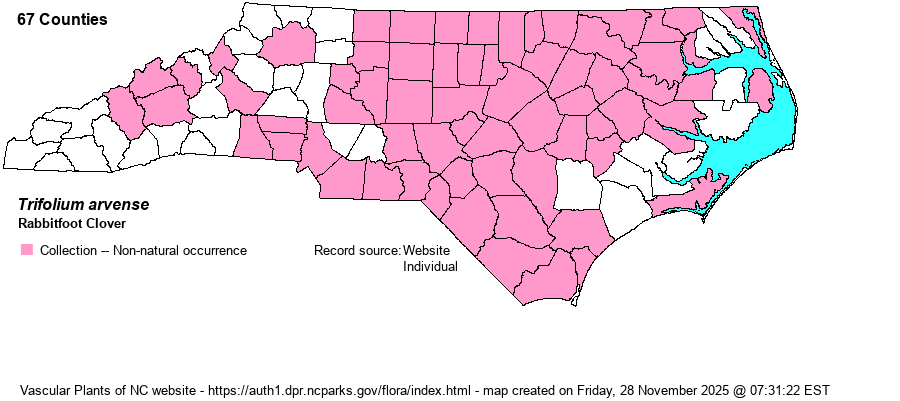| Author | L. | |
| Distribution | Essentially throughout the state, but sparse in the Mountains and uncommon in the outer Coastal Plain.
Native of the Mediterranean region; in N.A. essentially throughout southern Canada and the U.S., with a big gap in the Southwest and southern Rocky Mountain states. | |
| Abundance | Common, except uncommon west of Mecklenburg County and in the outer Coastal Plain. | |
| Habitat | Fields, fallow cropfields, disturbed ground, yard weed, urban/suburban lots, roadsides. | |
| Phenology | Flowering and fruiting April-October. | |
| Identification | Rabbitfoot Clover is easily recognizable by its soft, "furry" inflorescences and narrow leaflets. The inflorescence is whitish or dirty white, often with a pinkish tinge. | |
| Taxonomic Comments | Trifolium is a large genus of some 240-250 species globally, mostly north-temperate zone. Most are readily recognized as a clover by their 3 broad leaflets and globular to hemispherical head of densely-packed flowers. Flowers vary from white to pink, and red; the hop clovers have tiny yellow flowers. Some species were introduced for their forage value for livestock, others hitched a ride with hay, packing material, etc. Our two native species -- T. carolinianum and T. reflexum -- have suffered great loss of habitat and are now rare. | |
| Other Common Name(s) | | |
| State Rank | SE | |
| Global Rank | GNR | |
| State Status | | |
| US Status | | |
| USACE-agcp | | |
| USACE-emp | | |

